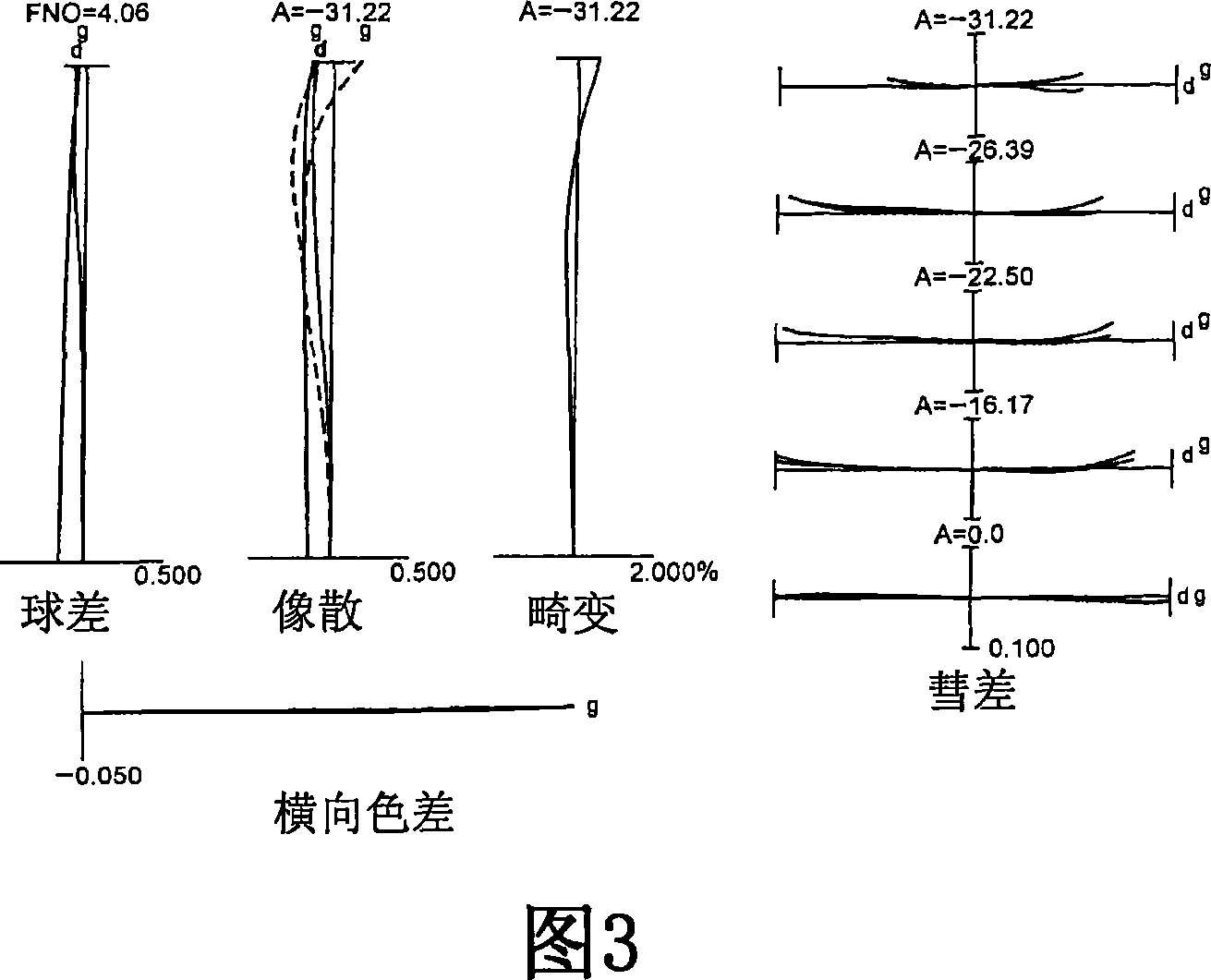Zoom lens system, imaging apparatus, method for vibration reduction, and method for varying focal length
A zoom lens and focal length technology, applied in the field of zoom systems, can solve the problems of insufficient zoom ratio and wide viewing angle.
- Summary
- Abstract
- Description
- Claims
- Application Information
AI Technical Summary
Problems solved by technology
Method used
Image
Examples
no. 1 example
[0049] The zoom lens system, imaging apparatus, method for vibration reduction, and method for changing the focal length according to the first embodiment are explained below.
[0050] The zoom lens system according to the first embodiment includes, in order from the object: a first lens group having positive refractive power, a second lens group having negative refractive power, a third lens group having positive refractive power, and a third lens group having positive refractive power. Ability of the fourth lens group. When zooming from the wide-angle end state to the telephoto end state, the distance between the first lens group and the second lens group increases, the distance between the second lens group and the third lens group decreases, and the first lens group The distance between the third lens group and the fourth lens group varies. In order from the object, the third lens group includes a front lens group having positive refractive power, and a rear lens group ha...
example 1
[0112] FIG. 1 is a schematic diagram showing a lens configuration of a zoom lens system according to Example 1 of the first embodiment together with a zoom locus of each lens group.
[0113] The zoom lens system according to Example 1 includes, in order from the object: a first lens group G1 having positive refractive power, a second lens group G2 having negative refractive power, a third lens group G3 having positive refractive power, and a lens group having The fourth lens group G4 with positive refractive power.
[0114] The first lens group G1 includes, in order from the object: a cemented lens composed of a negative meniscus lens L11 with a convex surface facing the object cemented with a positive meniscus lens L12 with a convex surface facing the object, and a lens with a convex surface facing the object. The convex surface of the positive meniscus L13.
[0115] This second lens group G2 includes, in order from the object: a negative meniscus lens L21 having a convex su...
example 2
[0222] 5 is a schematic diagram showing a lens structure of a zoom lens system according to Example 2 of the first embodiment together with a zoom locus of each lens group.
[0223] The zoom lens system according to Example 2 includes, in order from the object: a first lens group G1 with positive refractive power, a second lens group G2 with negative refractive power, a third lens group G3 with positive refractive power, and a lens group with positive refractive power. Refractive power of the fourth lens group G4.
[0224] The first lens group G1 includes, in order from the object: a cemented lens composed of a negative meniscus lens L11 with a convex surface facing the object cemented with a positive meniscus lens L12 with a convex surface facing the object, and a lens with a convex surface facing the object. The convex surface of the positive meniscus L13.
[0225] This second lens group G2 includes, in order from the object: a negative meniscus lens L21 having a convex sur...
PUM
 Login to View More
Login to View More Abstract
Description
Claims
Application Information
 Login to View More
Login to View More - R&D
- Intellectual Property
- Life Sciences
- Materials
- Tech Scout
- Unparalleled Data Quality
- Higher Quality Content
- 60% Fewer Hallucinations
Browse by: Latest US Patents, China's latest patents, Technical Efficacy Thesaurus, Application Domain, Technology Topic, Popular Technical Reports.
© 2025 PatSnap. All rights reserved.Legal|Privacy policy|Modern Slavery Act Transparency Statement|Sitemap|About US| Contact US: help@patsnap.com



